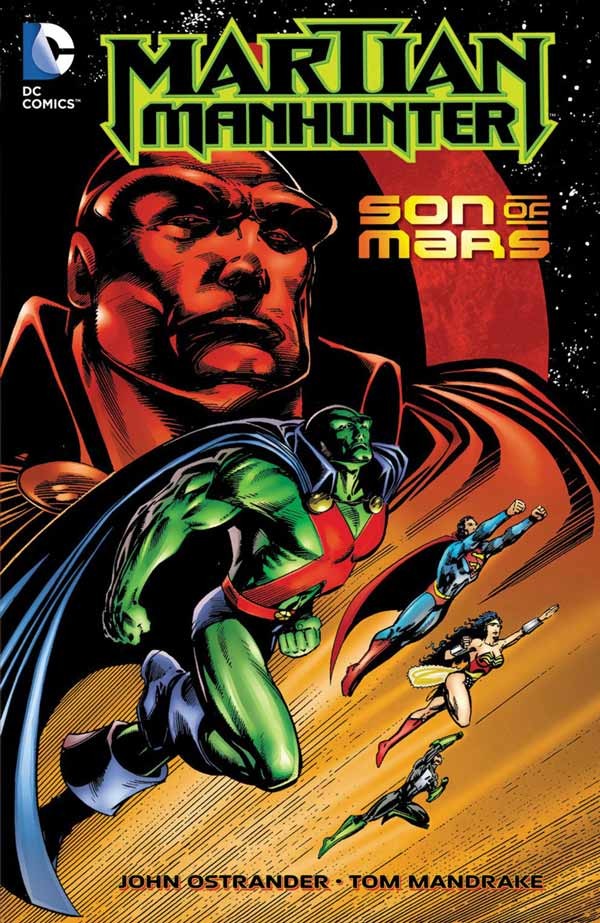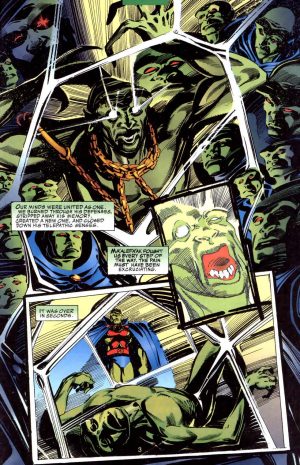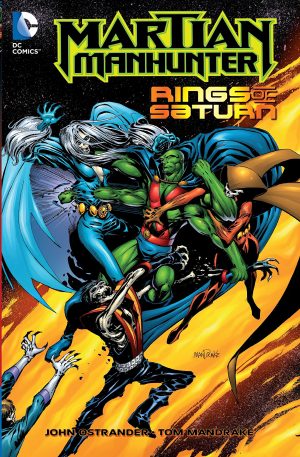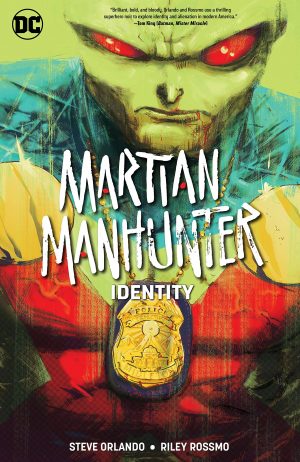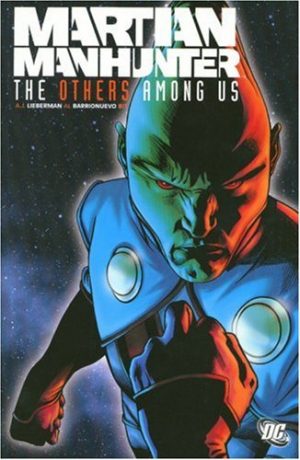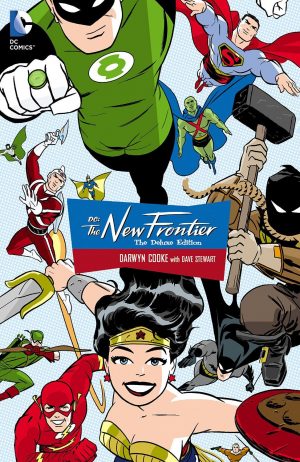Review by Frank Plowright
There are some that will tell you the dawn of the new superhero age began not with the updated Flash in 1956, but with the arrival of the Martian Manhunter the previous year. He was never really treated as a superhero, and his super powers tended to arrive with the story’s needs, but he had powers, and he used them, just generally not against supervillains.
Despite being around for decades, and a founder member of the Justice League, to this day he’s never had a run as long as the shorts collected in Showcase Presents Martian Manhunter, published for thirteen years. His next longest outing was three years under the control of John Ostrander and Tom Mandrake between 1998 and 2001, of which these are the opening results.
Truth be told, Ostrander and Mandrake improved the longer the series ran and while there are highlights in Son of Mars, there aren’t as many as are found in the following Rings of Saturn. An introspective and melodramatic opening introducing J’onn J’onnz, the Martian Manhunter, is effective in showing his past and capabilities as the last of his race. However, the recap is leaden, and Mandrake’s moody art doesn’t look a good fit. Stick with it. It’s teething problems.
In the next chapter Ostrander introduces one of the ideas that keeps things fresh and opens up new possibilities. It’s long been established that J’onn uses his shapeshifting capabilities to masquerade as investigator John Jones, formerly a Denver cop. Ostrander casually drops that he also maintains several other identities, and we’re shown some of them. It’s a simple and brilliant improvement, and we see why he becomes those people, including a Japanese businessman in a giant robot homage with a twist, and a bumbling super-villain. Ostrander also has J’onn prioritising helping the downtrodden, people who have no-one else to look out for them, deliberately distancing him from similarities to Superman, and makes good use of sometime supporting character Cameron Chase investigating J’onn.
Mandrake deals in gloom, laying on the shadows thick, which results in every story infused with a horror mood. It’s entirely appropriate considering the Martian Manhunter was first seen in mystery shorts, and the consistency makes it the default look. Jan Duursema’s variation is nowhere near as appealing.
The final stories revisit an old enemy from days on Mars, playing on how little both readers and his Justice League colleagues know about J’onn. Readers quickly learn he’s being framed, but it’s a very effective frame with clever elements. Clever is actually the default status, and once past that introductory chapter the innovation flows out, another example being Ostrander avoiding the constant use of J’onn’s weakness to fire, a convenient excuse for lazy writers over the decades. Some of what Ostrander introduces has been part of the Martian Manhunter’s background ever since, so reducing the novelty, but Son of Mars still surprises regularly, and introduces what’s arguably still the best Martian Manhunter series.
